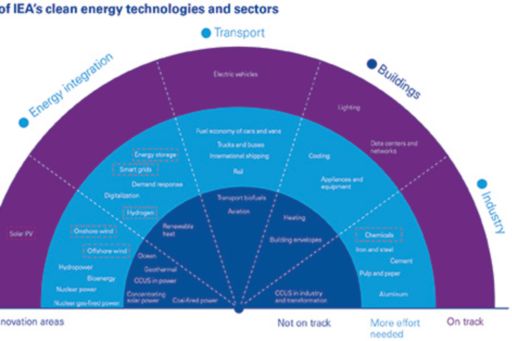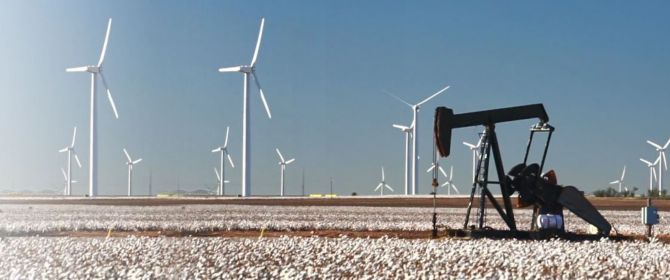The critical importance of supporting and accelerating sustainable energy innovation
Supporting & accelerating sustainable energy innovation
Part 3 | New drivers of the renewable energy transition
The world did not have to wait until oil and coal runs out to see the aspirations of the visionary and innovator Thomas Edison fulfilled. Nearly a century after Edison’s passing, solar power technology has today become a mature technology and a growing source of renewable power worldwide.
The concern over the finite nature of oil and gas resources has largely been replaced by the much more serious issue of climate change. The sustainable future for this planet is now in doubt unless corrective action is taken urgently, as described by the latest report of the Intergovernmental Panel on Climate Change (IPCC) issued in October 2018.1
The Paris Agreement on Climate Change in 2015 achieved quasi global consensus on the necessity for governments, industry players and people to act with the objective of limiting global warming to well below 2°C. This will not happen without a fast transition toward low-carbon technologies to mitigate the staggering pace of climate change.
Innovation must play a key role in the development of sustainable clean energy technologies as part of the endeavor to substitute carbon-emitting technologies that have become embedded in our everyday lives.
This point of view highlights the importance of deep-tech sustainable energy innovation for the global energy transition, the hurdles and opportunities that arise and the steps required to support this transformation process.
The role of sustainable energy innovation
Clean and sustainable energy technologies help reduce greenhouse gas emissions, either by decreasing green house gas production, e.g. with low-carbon generation and fuel solutions, or by decreasing consumption, e.g. energy efficiency solutions.
According to an IEA study Tracking Clean Energy Progress in 2017, only 4 out of 38 clean energy technologies and sectors were on track to meet long-term climate, energy access and air pollution goals.2 These technologies include solar PV, electric vehicles, storage, lighting and data centers, and networks. The study found that 11 technologies or sectors need significant acceleration to be on track with the climate goals. Some technologies, especially onshore wind, have fallen back against their deployment targets compared to 2016 and are thus not ‘on track’ anymore.3

Click to enlarge graphic - Radar of IEA’s clean energy technologies and sectors (PDF 850 KB).
Barriers to sustainable energy innovation
The nature of sustainable energy innovation — namely, the high technological risk, the financial cost and the strong commercial competition from established, low-cost (but high-emitting) products and solutions — represents the key systemic hurdles for the fast-track development of new innovations. As part of their new ‘Innovation Tracking Framework’, the IEA has identified 100 innovation gaps across the 38 clean energy technologies.4 These highlight where hurdles for development are particularly high and more innovation activity is needed. Hurdles can be divided into two areas: financial and regulatory/institutional.
Financial
Sustainable energy innovation is a highly expensive endeavor. To help meet all the financing requirements, both private and public investment are needed. The reality is that innovators of early-stage sustainable energy solutions find that there is usually a significant financing gap and public and private funding are typically not well aligned to meet this need for various reasons.
Regulatory/Institutional
Aside from the financial challenges for innovations, favorable energy regulations, funding policies and institutions to foster innovation are vital in creating a fertile environment for sustainable energy innovation.
The path forward to change the current landscape
In order to accelerate clean energy technology innovations, the financial, regulatory and institutional hurdles must be tackled through a globally coordinated approach. In reality, much comes down to better collaboration and coordination both at national levels — between private and public investors — and at an international level — in relation to government policies and the overall innovation agenda.
- Creating a secure funding envrionment
- Supporting start-ups on their development path
- Supporting investors in their investment into innovative start-ups
- Creating awareness for the sustainability innovation agenda.
Collaboration with the World Economic Forum Partnering to Accelerate Sustainable Energy Innovation
Since 2017, KPMG has been collaborating with the World Economic Forum on a project called: Partnering to Accelerate Sustainable Energy Innovation. The aim of the project is to identify and tackle the financial, regulatory and institutional hurdles in the global energy innovation process and find solutions to improve public-private collaboration in this field. As a result of various interviews with global experts in energy innovation, six recommendations have been developed that are designed to reduce hurdles and improve public-private collaboration.
The six recommendations include:
- Aligning public and private investment through automatic co-investment mechanisms.
- Establishing an independent sustainable energy innovation fund (SEIF).
- Increasing the role of strategic public procurement in energy innovation.
- Developing and implementing energy technology road maps through public-private collaboration.
- Creating national institutions for energy innovation.
- Establishing ‘super-transparency’ of public R&D expenditure.
In order to turn the recommendations into implementation actions, the World Economic Forum and KPMG are currently discussing the recommendations with a broad range of stakeholders in the global energy innovation ecosystem, including investors and innovators as well as multilaterals and governments in the Mission Innovation member countries.
“One idea in particular is receiving a lot of attention —and this is the proposal to establish an international sustainable energy innovation fund. This proposal involves the use of a blended finance funding structure to attract both public and private investors and a more professional and technical approach to project evaluation and the ongoing oversight given to these projects, and the idea is that these features should overcome some of the inherent difficulties that currently prevail across the funding spectrum.
In addition to the specific work on the six recommendations, this project has helped raise the profile of sustainable energy innovation and its critica importance to the climate change agenda. This in turn, we hope, will encourage greater collaboration and interaction between the investment and innovation communities.”
— Mike Hayes, Global Leader of Renewables, KPMG in Ireland
Concluding remarks
Sustainable energy innovation is of critical importance in achieving the global climate targets. More sustainable energy technologies need to be developed and commercialized faster. Breakthrough energy technologies with broad applicability and affordability are needed to substitute incumbent solutions and lifestyles. In order to tackle systemic hurdles in the energy innovation process, it is critical to foster a culture of policy discussion and to increase the involvement of both private and public stakeholders in the energy innovation ecosystem. Innovation as such is not new, but the necessary speed to develop technologies and the inherent pressure to act in this particular industry is. Luckily, we can build upon experiences and lessons learned from other industries and sectors. Financial mechanisms of co-investment attracting both public and private investors have, for instance, extensively and successfully been used in the context of development finance in emerging economies. Other industries, such as the telecommunications industry, has shown exemplary speed and foresight in developing new products and ideas. Where there is a market, there will always be a product.
However, we should also focus on the positives. We see sustainable energy innovation happening all over the world with some really interesting and exciting ideas beginning to emerge. The challenge for all of us who are committed to doing something for the climate change agenda is to recognize the importance of sustainability innovation and to actually do something to help make it a reality.
Footnotes:
1 Intergovernmental Panel on Climate Change (IPCC), 2018, Global Warming of 1.5 °C
2 IEA, 2017, Tracking Clean Energy Progress
3 IEA, 2017, Tracking Clean Energy Progress
4 IEA, 2017, Tracking Clean Energy Progress

